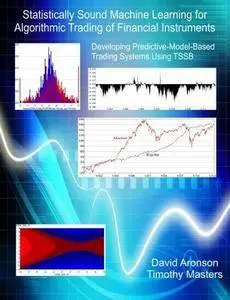Statistically sound machine learning for algorithmic trading of financial instruments By David Aronson, Timothy Masters
2013 | 542 Pages | ISBN: 148950771X | PDF | 51 MB
2013 | 542 Pages | ISBN: 148950771X | PDF | 51 MB
This book serves two purposes. First, it teaches the importance of using sophisticated yet accessible statistical methods to evaluate a trading system before it is put to real-world use. In order to accommodate readers having limited mathematical background, these techniques are illustrated with step-by-step examples using actual market data, and all examples are explained in plain language. Second, this book shows how the free program TSSB (Trading System Synthesis & Boosting) can be used to develop and test trading systems. The machine learning and statistical algorithms available in TSSB go far beyond those available in other off-the-shelf development software. Intelligent use of these state-of-the-art techniques greatly improves the likelihood of obtaining a trading system whose impressive backtest results continue when the system is put to use in a trading account. Among other things, this book will teach the reader how to: • Estimate future performance with rigorous algorithms • Evaluate the influence of good luck in backtests • Detect overfitting before deploying your system • Estimate performance bias due to model fitting and selection of seemingly superior systems • Use state-of-the-art ensembles of models to form consensus trade decisions • Build optimal portfolios of trading systems and rigorously test their expected performance • Search thousands of markets to find subsets that are especially predictable • Create trading systems that specialize in specific market regimes such as trending/flat or high/low volatility



